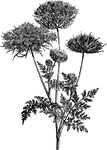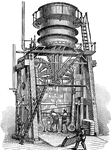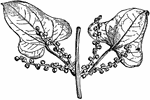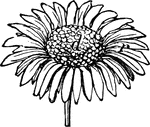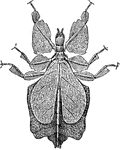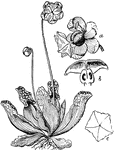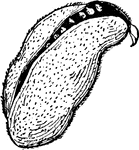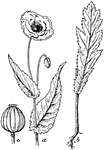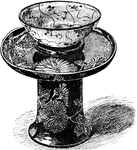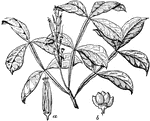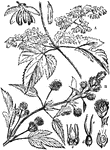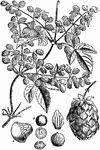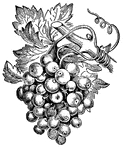
Vine
A well-known climbing shrub, which consists of climbing plants with woody stems, simple or compound…
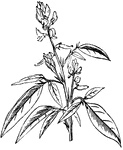
Telegraph Plant
A complicated plant with trifoliate leaves, small flowers, and flat, deeply lobed and jointed pods.

Venus Fly Trap
A plant with a rosette of root leaves, from which rises a naked scape bearing a corymb of rather large…
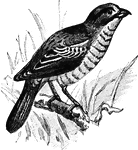
Plant Cutter
A bird that does much damage by cutting tender sprouts and buds with their serrated bill.
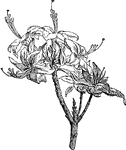
Purple Azalea
A plant with the flowers having the style and stamens much exserted and are quite variable in color.…
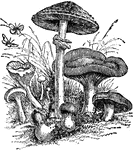
Mushroom
"The name of several classes of fungi. The best known is the common mushroom. It has a fleshy head,…

Shamrock
"The national emblem of Ireland, is a plant with a leaf formed from three leaflets. It is thought to…

Ovule
A section of an ovule. An ovule is a structure found in seed plants that develops into a seed after…
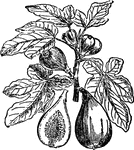
Fig Plant
The fruit of Ficus carica, which is native to Asia. The genus is an enormous one in the tropics. There…

Lentil
"An annual plant of the same genus with tares, a native of countries near the Mediterranean, and which…
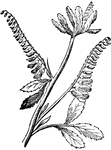
Melilot
"A genus of clover-like plants of the natural order Leguminosae, with ternate leaves, differing from…

Melons
"A plant of the same genus with the Cucumber, much cultivated for its fruit, which is sweet, with a…

Warty Dodder
A plant found throught the tropical regions of the world. It consists of thin leafless stems.
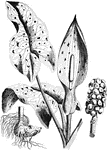
Cuckoo Pint
A common plant of the north temperate Europe. It has purple spotted leaves and can force people to have…

Mesquit
A plant characterized by the cylindrical spikes, and by the pod, which is nearly cylindrical, straight…
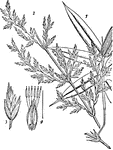
Indian Bamboo
"Bambusa arundinacea, in Indian bamboo. 1. Leafy shoot. 2, Branch of inflorescence. 3, Spikelet.…
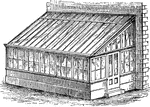
Plant House
"The glass roof is commonly designed so as to form a uniform plane or slope from back to front in lean-to…
Suckering Iron
"Root suckers are young shoots from the roots of plants, chiefly woody plants, as may often be seenin…

Yucca
"A plant may be operated on wherever the stem has become firm and woody; the top will not fail to make…
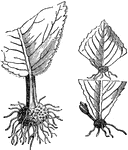
Leaf Cuttings
"Many plans may be propagated by planting their leaves or portions of their leaves as cuttings, as,…
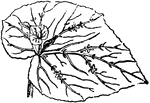
Leaf Cuttings
"Many plans may be propagated by planting their leaves or portions of their leaves as cuttings, as,…

Single Eye
"This mode of propagation is performed by cutting the branches into short lengths, each containing one…

Montreuil Fan
"The Montreuil form of training. The principal feature is the suppression of the direct channel of the…

Dumontier's Fan
"The form of Dumoutier is merely a refinement on the Montreuil method. The formation of the tree commences…

Seymour's Fan
"Mr. Seymour's form approaches more nearly to the French method than any other practised in England,…

Ladybug
"Lady-bird beetles, or "lady bugs." These beetles are very destructive to plant lice." — Goff,…

Ladybug
"Lady-bird beetles, or "lady bugs." These beetles are very destructive to plant lice." — Goff,…

Ladybug
"Lady-bird beetles, or "lady bugs." These beetles are very destructive to plant lice." — Goff,…
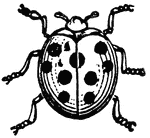
Ladybug
"Lady-bird beetles, or "lady bugs." These beetles are very destructive to plant lice." — Goff,…

American Aloe
Stiff plants with large, thick leaves. It is said to have medicinal purposes for burned or damaged skin.

Fucus Vesiculosus
"Fucus vesiculosus: showing the receptacles of the fructification a, a, at the ends of the branching…

Aloe
"A drug of great antiquity, for we find Dioscorides make mention of aloe as a substance obtained from…
